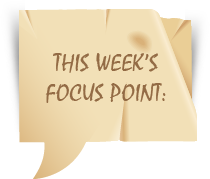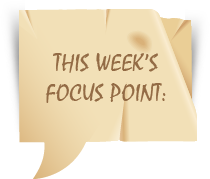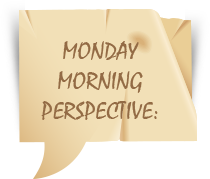
Behavioral science proves it: your world is perfectly designed for the results you are getting. Leaders who want to achieve ambitious goals need to be able to change people or change people. Unfortunately, a challenging talent marketplace gripping every business is often delaying timely people changes that matter. Leaders feel trapped between tolerating performance below expectations or having the employees to deliver results. When you accept poor performance, everyone pays the price. It affects team effectiveness, talent retention, company culture, growth prospects, financial stability, innovation, and, ultimately, your leadership credibility. Making difficult decisions in leadership can’t be escaped. But you can strive for better leadership habits that bring out the best in your team, and you can refuse to tolerate poor performance. Here is one practical performance improvement tool and four leadership habits proven to elevate people, profit, and purpose.



Isn’t poor performance better than a critical role vacancy? Right?
Employee labor costs are often among the most significant budget line items. The benefits of effective performance management are well documented beyond the obvious benefit of increasing revenue.
Effectively applying performance reinforcement leads to increased organizational citizenship behavior (OCB). Also known as discretionary effort, OCB is performance management’s “Holy Grail.” It cracks the code to the full potential of a team and organization.
Evidence links effective performance management with positive individual and organizational outcomes such as increased productivity, decreased employee turnover intentions, reduced absenteeism, improved operational efficiency, reduced costs, and improved customer satisfaction.
Performance is contagious. Tolerating poor performance reinforces poor performance. Failing to bring out an employee’s best undervalues your team. When performance falls below the standards of the job, the employee, team, and organization suffer.
A study revealed that underperforming employees comprise more than 15% of organizations. Reduced productivity, inferior products and services, and team morale issues stem from tolerating poor performance in the workplace.
Are you accidentally tolerating poor performance?
Below are four common and dangerous accidental habits leaders develop in a company culture that tolerates poor performance. If you recognize one or more of these symptoms of tolerating poor performance, now is the time to take action.
Accidental Habit #1: Don’t let performers know how they are performing.
Too often, leaders avoid providing feedback on performance. Providing clear expectations and giving feedback are essential for employees to achieve high-performance levels. Sadly, the lack of this feedback is a common challenge for poor performers and high performers.
Leaders often don’t feel equipped to provide specific feedback or lack the will to have a difficult conversation about an employee’s performance. Avoiding a difficult conversation often worsens the situation for the employee and the leader.
Accidental Habit #2: Design and provide tools without input from performers.
Time constraints and an overreliance on past understanding are often behind the faulty decision-making why leaders don’t solicit employee input from followers. Employees cannot perform at high levels without the proper staffing, equipment, or budget.
Accidental Habit #3: Pay poor performers the same as good ones.
Leaders pulled in multiple directions often lack direct performance observation and performance documentation to quantify the difference between the top and bottom performers. The result is often that poor performance gets rewarded equally with high-performance levels.
Accidental Habit #4: Don’t develop team members.
Sometimes, leaders don’t invest in coaching and developing employees out of fear that developed employees will find another job. In a fast-paced digital marketplace, training investments must match the pace of change so that employees remain current and capable.
How to avoid tolerating poor performance
Just stop it! Ok, that’s probably not the most helpful advice. One of my favorite Bob Newhart skits presents this oversimplified advice for a client seeking help. If you need to laugh before jumping to real advice, here is the video.
To avoid tolerating poor performance, it is helpful first to understand the factors that influence performance.
Psychologist and founder of the field of human performance technology, Thomas Gilbert, argued that environmental and individual are the two fundamental performance factors influencing our behavior.
-
Environmental Factors: Factors that the leader controls
-
Individual Factors: Factors that the performer controls
He identified that the primary environmental factors are information, tools, resources, and incentives. And identified that skills, knowledge, capacity, and motivation are the primary individual factors. These six factors are described below in the Behavior Engineering Model.



You can apply the model like a checklist to understand where to optimize performance and uncover what followers need most to improve their performance on any given task.
When using this model to diagnose opportunities for improvement, a simple way to get started is to ask employees in team meetings or one-to-one:
-
Which of the six factors would help them immediately improve their performance?
-
When asking this question, be prepared to be surprised and follow up with probing questions such as: What is the real challenge? Or What else?
-
In my application for the Behavioral Engineering Model, I have polled hundreds of employees across many different industries, and the most frequently selected performance improvement factor needed is information and feedback, followed by tools and resources. The only exception that I have found is with new hires, who often choose skills and knowledge.
Four life-changing leadership habits
Leaders who avoid tolerating poor performance tend to have the following good leadership habits:
Leadership Habit #1: Provide timely feedback for high performance
Timely feedback is not once a year or a month. Performance feedback is best when given as close to being in the moment as possible.
Leadership Habit #2: Ask for input before making decisions that impact others
Remember, those closest to tasks have unique insights, and likely, many changes have occurred since the last time you performed the task.
Leadership Habit #3: Provide incentives for good performance
Compensation for the work is not enough. The rewards and incentives you provide can be as simple as saying thank you.
Leadership Habit #4: Invest in developing followers
Career development is frequently one of the top reasons employees leave their current jobs. Find out what employees need to help them achieve higher performance levels and provide opportunities to learn and grow in those areas.
One of the best ways to avoid tolerating poor performance is to create an environment that brings out the best in followers. The Behavioral Engineering Model can help you take action and make changes in ways that matter most.
Accidental leadership habits and ineffective leadership approaches are not destiny, and all leaders need to continually develop at a pace consistent with the change in the leader’s world. If you want to learn more ways to maximize performance, you will want to check out my book, Life-Changing Leadership Habits.
Are those you lead growing, serving others, and prepared to surpass you?



References:
Daniels, A., & Daniels, J. (2006). Performance management: Changing behavior that drives organizational effectiveness. Performance Management Publications.
Doolittle, J. (2023). Life-changing leadership habits: 10 proven principles that will elevate people, profit, and purpose. Organizational Talent Consulting.
Gallup. (2023). Global engagement survey.
Gilbert, T. (1978). Human competence: Engineering worthy performance. McGraw-Hill.
Faragher, J. (2006). Employers lose 32m a year, tolerating poor performance. Personnel Today, 1.
Plump, C. (2010). Dealing with problem employees: A legal guide for employers. Business Horizons, 53(6), 607-618.










